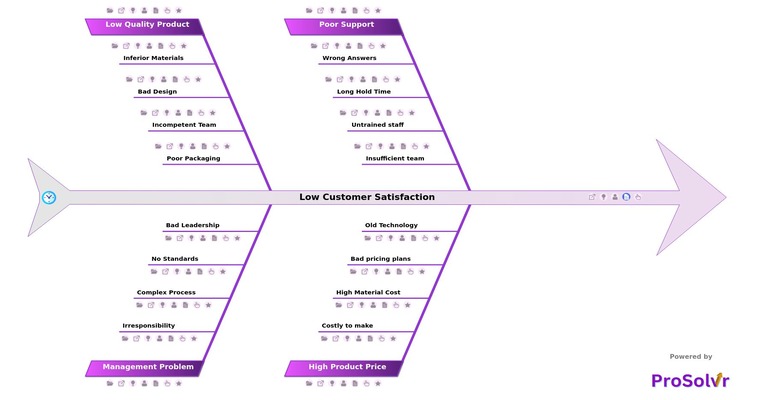Root Cause Analysis of Low Customer Satisfaction
Understanding the root causes of low customer satisfaction is essential for businesses looking to identify and address underlying issues. This analysis delves into the primary factors contributing to dissatisfaction and offers insights on how to improve customer experiences.
One of the main contributors to low customer satisfaction is poor product or service quality. When customers receive products or services that do not meet their expectations or have defects, it can lead to a decline in trust and satisfaction with the brand.
Inadequate customer support is another significant factor driving low satisfaction levels. Customers expect timely and helpful assistance when they encounter issues or have questions about a product or service. Slow response times, unhelpful interactions, or a lack of support channels can frustrate customers and leave them feeling undervalued and dissatisfied.
Inconsistent communication exacerbates the problem of low customer satisfaction. When businesses fail to keep customers informed about order status, delivery updates, or changes in policies, it can lead to confusion and dissatisfaction. Clear and transparent communication is crucial in building trust and maintaining positive relationships with customers.
Moreover, pricing issues such as hidden fees, unexpected charges, or perceived unfair pricing strategies can negatively impact customer satisfaction. Customers value transparency and fairness in pricing, and any discrepancies can lead to distrust and dissatisfaction.
To improve satisfaction levels, businesses must focus on addressing these root causes effectively. Implementing quality control measures, enhancing customer support systems, improving communication strategies, and ensuring transparent pricing practices are key steps in enhancing customer satisfaction.
Identifying and addressing the root causes of low customer satisfaction is crucial for businesses aiming to foster positive customer relationships and drive success. By conducting a thorough analysis and implementing actionable solutions, businesses can enhance customer experiences, build loyalty, and ultimately achieve long-term success.
Who should use the Low Customer Satisfaction template?
- Business Owners: Small to large businesses across industries can use this template to analyze and improve their customer satisfaction levels, ultimately enhancing their reputation and success.
- Customer Service Managers: Those responsible for managing customer support teams can utilize this template to identify areas for improvement in support quality, response times, and staff training.
- Product Managers: Product managers can use this template to evaluate product quality, pricing strategies, and design issues that may be contributing to low customer satisfaction.
- Marketing Professionals: Marketing teams can gain insights into customer perceptions of branding, communication strategies, and promotional offers that may impact satisfaction levels.
- Quality Assurance Teams: QA teams can utilize this template to assess product quality, identify defects, and implement quality control measures to enhance customer satisfaction.
- Sales Teams: Sales professionals can understand how pricing, product features, and customer interactions during the sales process may be affecting customer satisfaction.
- Consultants: Business consultants specializing in customer experience and satisfaction can use this template to conduct thorough analyses for their clients and recommend actionable solutions.
- Entrepreneurs and Startups: Individuals starting a new business or launching a new product/service can benefit from this template to preemptively identify potential issues and ensure a positive customer experience from the start.
Why use the Low Customer Satisfaction template?
- Identify Issues: Quickly pinpoint areas of concern that are negatively impacting customer satisfaction.
- Improve Customer Experience: Implement targeted strategies to enhance the overall customer journey and satisfaction levels.
- Enhance Product/Service Quality: Evaluate product or service offerings to identify and address quality issues that may be affecting customer satisfaction.
- Optimize Pricing Strategies: Analyze pricing models and plans to ensure they align with customer expectations and market standards.
- Enhance Support Services: Improve customer support quality, response times, and staff training to better address customer inquiries and issues.
- Drive Business Growth: By improving customer satisfaction, businesses can boost customer loyalty, retention, and advocacy, leading to increased revenue and growth.
- Competitive Advantage: Gain insights into what customers value most and use this knowledge to differentiate your offerings and stand out in the marketplace.
- Strategic Decision-Making: Make informed decisions based on data-driven insights to prioritize initiatives that will have the most significant impact on customer satisfaction.
The Low Product Quality fishbone template helps identify issues, strategize improvements, and implement changes aimed at boosting and improving customer satisfaction.
Draft and create a template for problem analysis in ProSolvr by smartQED.
Curated from community experience and public sources:








